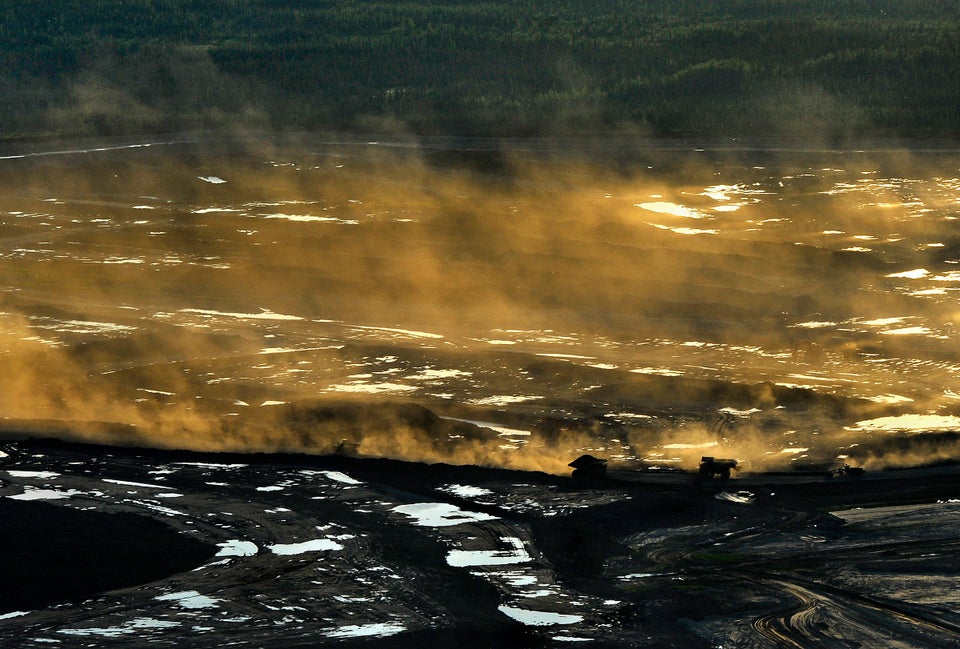WASHINGTON -- The State Department's final environmental impact analysis for the proposed Keystone XL pipeline downplays the significance the pipeline would have for development of the Canadian tar sands, according to a new analysis from a United Kingdom-based group. The analysis also argues that the State Department underestimated the amount of greenhouse gas emissions that would come with that development.
The Carbon Tracker Initiative, a nonprofit that focuses on how carbon budgets interact with financial markets, released the new report on Monday, making its case for why Keystone XL is more important in the context of global emissions than the State Department's study indicates.
The State Department released the final environmental impact statement, or FEIS, on Jan. 31. That analysis concluded that approval or denial of any specific project to transport oil, including Keystone XL, "remains unlikely to significantly impact the rate of extraction in the oil sands, or the continued demand for heavy crude oil at refineries in the United States."
But Carbon Tracker says this is the "significance trap." The pipeline is only deemed insignificant because the State Department's report failed to fully consider the ways the pipeline would affect production of the tar sands, the group argues.
"In my view, 'significance' is in the eye of the beholder," Mark Fulton, the former climate change strategist for Deutsche Bank and the co-author of the report, told The Huffington Post. And the research finds that Keystone XL would enable a "significant amount of production."
Carbon Tracker says the government's analysis "does not fully explore" how the lower transportation costs of pipeline transportation, when compared to rail transportation, would affect future oil sands production. The price of oil would have to be higher to make shipping by rail cost effective. Given the difference in price points at which the various methods of shipping become cost effective, oil companies could produce much as 525,000 more barrels of oil per day out of the tar sands if they have access to the Keystone XL pipeline.
The pipeline would be responsible for generating a whole lot more emissions than the State Department accounted for, the group argues, because it would be facilitating more rapid development of the tar sands, which would create its own emissions in turn. The report finds that, through 2050, "KXL-enabled production" of tar sands oil would produce as much as 5.3 billion metric tons of carbon dioxide-equivalent. Carbon Tracker's projection is within the range of the State Department's estimate of annual emissions -- a maximum of 168 million metric tons -- but it totals them over 35 years to demonstrate the pipeline's cumulative and longterm impact. It would be the equivalent of building an additional 46 coal-fired power plants, or roughly the average amount of CO2 that the United States emits overall each year.
Further, the group argues, under all the Keystone-generated-emissions scenarios that were considered in the State Department's report, the U.S. would fail to meet the target of cutting emissions by 17 percent below 2005 levels by 2020, the goal the U.S. has established in the context of international climate negotiations. The emissions estimates are also not consistent with the goal of limiting global warming to no more than 2 degrees Celsius, which world leaders agreed to at the 2009 climate summit in Copenhagen.
Other groups, like the U.S.-based environmental group Oil Change International, have argued that none of the scenarios for future energy use used in the FEIS would put the U.S. on a path to meeting those stated climate coals. "The State Department is assuming failure in meeting our climate goals," said Steve Kretzmann, the group's executive director. "They're not modeling a climate-safe world."
The Carbon Tracker's interpretation is worth considering, if only because the State Department's FEIS used the group's methodology from previous studies in its own evaluation of the pipeline's production implications, though the government arrived at different conclusions. (See footnote 154 in the market analysis section of the FEIS, which cites its work.) Carbon Tracker's Fulton says that the group's latest report was a response to that inclusion in the FEIS.
A State Department spokesman did not respond to a request for comment on the Carbon Tracker report.
Clarification: This article has been updated to clarify that Carbon Tracker's estimate of emissions from Keystone XL-enabled production of tar sands oil -- as much as 5.3 billion metric tons of carbon dioxide-equivalent -- is a 35-year total of annual emissions estimates within the range of the State Department's yearly emissions projections.

